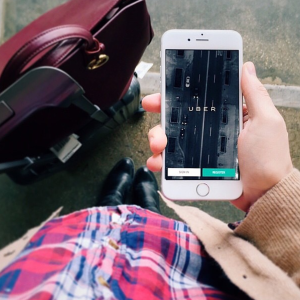People perpetually ask, “Which company will become ‘the’ Uber of health care?” As of March, one company announced its intention to at least become “an” Uber of health care. Appropriately, the company entering the fray is … Uber.
Ridesharing’s pioneer company has launched UberHealth. The new venture effectively grafts its core business onto health care by providing transportation for patients to appointments at doctors’ offices, hospitals, clinics and rehab centers. The service differs from Uber’s familiar ridesharing business in that the medical providers will arrange the rides. The patient/passengers will not need the UberHealth app, and they won’t even need a smartphone.
UberHealth’s specific service could conceivably contribute as much to Americans’ health as a new drug or surgical procedure. American patients have a high no-show rate for medical appointments (one-third, according to Uber). Wasted appointment times cost providers money, which, like other operating expenses, gets passed on to all of us.
More important, a no-show can also mean that the patient forgoes important care or fails to follow through on regimens previously prescribed by providers. Actually making it to scheduled appointments has the potential to save lives and reduce suffering.
UberHealth hopes to cut into this absenteeism by lowering the costs and difficulty — for patients and providers — of shuttling to and from appointments. Potentially, UberHealth and similar services can also reduce the frivolous use of ambulances as ultra-expensive taxicabs.
This, of course, is a far cry from becoming “the” Uber of health care. But it’s unrealistic to expect any one firm to do for the whole of health care — one-fifth of the U.S. economy — what Uber did for a tiny slice of the considerably smaller transportation sector.
Uber injected new competition into a stodgy, protected market. But an important component of its success was the fact that the firm took aim at a fairly homogeneous line of business. Taxis ferry passengers from Point A to Point B, and usually over fairly small distances. Uber accumulated massive volumes of data, built superb telemetry, and built several levels of artificial intelligence to improve the experience of arranging a ride. But the key was finding one thing and doing it well.
Now, UberHealth seems to have zeroed in on a narrow sliver of health care where the status quo, as was the case with taxis, is less than ideal and amenable to a technological fix. Other Uber-like firms are doing the same. GetHeal.com, for example, enables patients to summon doctors to their homes or workplaces just as Uber users summon rides. LemonaidHealth.com simplifies the task of obtaining certain prescription drugs. DoctorOnDemand.com brings medical care to the home via laptop, tablet or smartphone. Opternative.com measures patients for eyeglasses via laptop and smartphone.
A common theme of “Uber-like” technologies is the combination of big data, connectivity and artificial intelligence to shrink transaction costs and shorten learning curves. Uber passengers can summon rides in seconds without searching for a phone number or a taxi stand. Uber drivers can effortlessly navigate the streets of cities they have never before visited. The technologies effectively amplify and accelerate the human brain.
The enormous size of our health care system, coupled with its many shortcomings, suggests room for hundreds of Uber-like enterprises. It will be interesting to see how many of these start-ups adopt another key feature of the Uber story — a willingness to push the limits of existing laws and regulations. For many decades, the taxi industry used its political muscle to stave off potential competitors in the business of intracity transport. Uber barreled through those obstacles, at times practicing what my colleague Adam Thierer calls “technological civil disobedience.”
This “let them sue us” attitude enabled Uber to overcome the barricades the taxi industry had worked assiduously for decades to construct. AirBNB did the same for the hospitality industry.
Health care is loaded with such artificial, deeply entrenched barriers. The real question is how many of the innovators with ideas as novel as Uber’s business model will also have the stomach to fend off the established players and their political agents.


